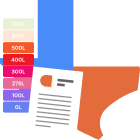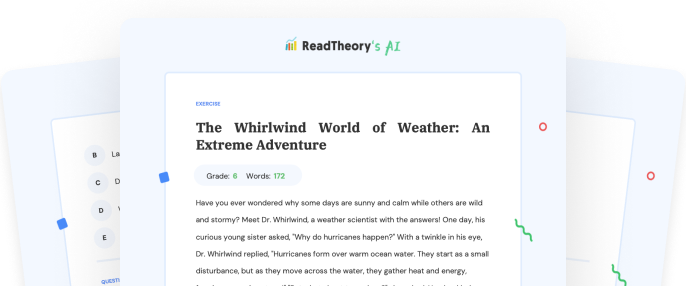Transform Your Teaching
with AI-Powered Worksheets
With ReadTheory’s Instant Worksheet Builder, you can create engaging, grade-appropriate worksheets tailored to your students in minutes. Spark curiosity, save time, and empower critical thinking with AI-powered tools designed for teachers like you.


Path to the Presidency: A Look into Presidential Elections
Every four years, American citizens cast their votes to choose the President of the United States. But how exactly does someone become a President? Let's take a look. The process starts with primaries and caucuses, where candidates from the same political party compete against each other. The winner becomes the party's nominee. Then comes the November general election, where nominees from different parties go head-to-head. But here's a twist - the President isn't chosen based on the total number of votes they receive, known as the popular vote. Instead, they're chosen by the Electoral College, a group of people appointed by each state's political parties. The more people a state has, the more electoral votes it gets. A candidate needs 270 out of 538 electoral votes to win. Citizens also play a crucial role. By registering to vote and casting their ballots, they can influence who becomes President. Participating in elections is a way for citizens to express their views and take part in shaping the country's future.
Question 1
What does the term 'popular vote' refer to in the context of the US Presidential Election?
The total number of votes a candidate receives
The votes from the Electoral College
The votes from the state with the most population
The total number of votes a party receives
The votes from the party members
Question 2
What role do American citizens play in the Presidential Election?
They vote for the party's nominee
They participate in the primaries and caucuses
They are appointed to the Electoral College
They vote and can influence who becomes President
They count the votes
Question 3
How is the winner of the US Presidential Election determined?
By the total number of votes they receive
By the Electoral College
By the number of states they win
By the party with the most votes
By the candidate with the most financial support
Question 4
Why does the US use the Electoral College system instead of popular vote?
To give less populated states a fair representation
Because it was the original way to vote
To avoid voter fraud
Because it's easier to count votes
None of the above
Question 5
What happens in the primaries and caucuses?
Candidates from different parties compete against each other
Candidates from the same party compete against each other
Citizens vote for their preferred candidate
The Electoral College votes are counted
Candidates present their campaign promises
 or share via
or share via

Assign the ReadTheory pretest to determine students' reading levels.

Why Teachers Love
Instant Worksheet Builder?

Tailored Content for Every Student
Craft worksheets with passages and multiple-choice questions customized to your chosen topic and grade level, ensuring relevance and engagement.

Save Hours
of Prep Time
Our AI, Lexi, generates complete worksheets—passages, questions, and answers—in minutes, freeing you to focus on teaching, not planning.

Standards-Aligned Learning
Every worksheet is designed to boost reading comprehension and critical thinking, aligning seamlessly with State Standards to help your students shine.
Personalized teaching
for personalized learning
Browse worksheets created and refined by educators using Lexi—your source for inspiration and ready-to-use resources.


ReadTheory is free for Teachers to use.
Join thousands of educators using ReadTheory for free. Sign up today and start creating in just minutes!





